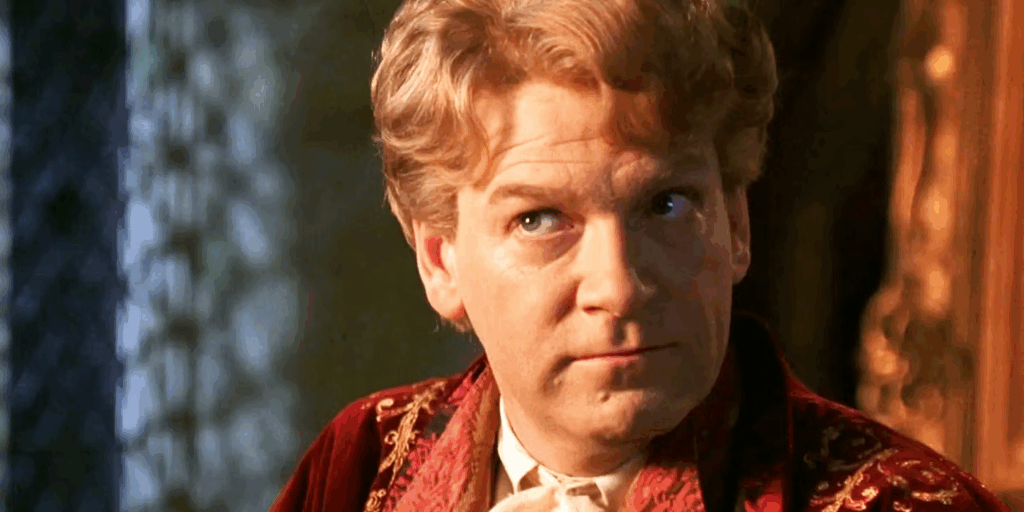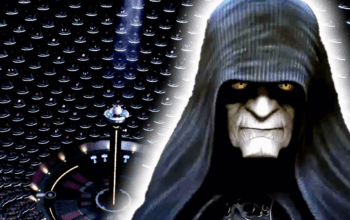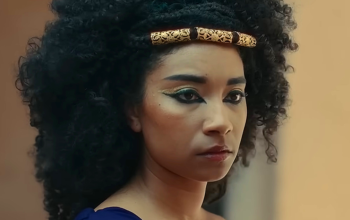A Cautionary Tale in How Not to Revive a Classic

Introduction: A Lost Opportunity
If there was ever a documentary that truly deserved a worthy reboot, it was Walking with Dinosaurs.
The original 1999 series was revolutionary: it treated prehistoric life with the seriousness and cinematic weight of a real nature documentary. It didn’t sensationalize dinosaurs as bloodthirsty monsters, but portrayed them as animals — complex, vulnerable, and trying to survive like any other part of the natural world.

Twenty-five years later, fans hoped for a revival that would honor that legacy. With updated science, better visual effects, and a global perspective.
For a while, Prehistoric Planet filled that void impressively. It borrowed many of WWD‘s cinematic techniques while forging its own identity — more traditional in structure, more Attenborough in tone. It raised the bar with cutting-edge visuals, wide ecological scope, and thoughtful narration.
So when the BBC announced it would return to the Walking with Dinosaurs brand, the old-guard fans — myself included — were ecstatic. Imagine the possibilities: a faithful update grounded in modern paleontology, covering new species and regions never depicted before — from the feathered dinosaurs of China, Australia’s unique fauna, or Appalachia, the lesser-known eastern half of the U.S. continent. The potential was enormous.
Unfortunately, the 2025 reboot is none of those things. It’s a watered-down, shallow imitation. While there are flashes of good ideas and good intentions, it ultimately fails to recapture the tone, the visual power, or the emotional depth of the original. It’s a reboot in name only — one that misunderstands nearly everything that made the original Walking with Dinosaurs special.
1. Constricted Timeline

One of the most important elements of the original Walking with Dinosaurs was how it structured its episodes. It took viewers on an evolutionary journey — from the dawn of the dinosaurs in the Triassic period to their final days in the late Cretaceous. Along the way, it showed how these creatures evolved, diversified, and rose to dominate the planet.
Each episode stood on its own, presenting a fully realized ecosystem with unique species, environments, and behaviors. That variety made the Mesozoic feel vast and alive.
The reboot abandons that approach. Most episodes are locked into the late Cretaceous, with only a single Jurassic setting — oddly placed as the final episode. While remakes often alter structure for freshness, the narrow focus here feels like a lack of ambition. The Mesozoic spanned over 180 million years, yet the reboot explores barely a fraction of it.
Even within individual episodes, the scope is limited. Where the original would showcase five or six species interacting within their environment, the reboot often centers on just two or three. The result is a shallow portrayal of ancient ecosystems. Imagine the original’s fourth episode, Giants of the Skies, showing only the main pterosaur and skipping everything else around it — no prey, no rivals, no background life. That’s the kind of emptiness this new version delivers.
The original understood when to step away from its protagonist to explore the world. The reboot doesn’t. It offers a narrow, tunnel-vision perspective that flattens the scale of the era. The environments feel sparse, the world underpopulated, and the ecological complexity is all but lost.
2. “OMG, They Killed Kenny!” – The Missing Voice of Kenneth Branagh

When it comes to educating your audience, casting the right narrator can make or break a documentary. In recent years, it’s become common to cast big-name celebrities for voiceovers, but that often backfires. Many of them sound dry or disconnected, lacking the performance chops to bring a world to life. They’re not trained for voice acting in a booth, and it shows.
You need a narrator with a sense of gravity to pull off a documentary of this scale. That’s why Kenneth Branagh was the perfect exception to this trend. In the original Walking with Dinosaurs, he didn’t just narrate — he elevated.
Everything Branagh said had real weight to it, as if every piece of information was essential to the world we were watching unfold. Perhaps that’s due in no small part to his background as a Shakespearean-trained actor. He brought intensity, drama, and subtle emotion to even the most factual lines, turning prehistoric life into something both majestic and tragic.
The 2025 reboot lacks this entirely. In place of Branagh, we get Bertie Carvel — whose work may be respectable, but he was simply miscast here. His narration is a dry, whispery drone, like a stock Attenborough impression stripped of all the charm and charisma. Rather than pulling you into the story, it actively loses its grip on you.
Not bringing Branagh back — or at least finding someone with a similar gravitas — reflects a fundamental misunderstanding of what made the original resonate so deeply.
3. Sanitized Depiction of Nature

One of the biggest failures of the reboot is how sanitized its portrayal of nature is. The original Walking with Dinosaurs didn’t shy away from showing the harsh, sometimes brutal realities of life in the prehistoric world. And that was one of its greatest strengths.
Episodes like the tragic story of the Ornithocheirus, who dies alone after a long migration across continents, or the unforgettable death of the Leaellynasaura matriarch — whose head is graphically torn off by a predator — were emotionally raw and impactful. These moments didn’t feel like cheap violence for shock value. They were part of a larger theme: that nature is beautiful, yes, but also cruel and indifferent. And that message mattered.
The original series understood that real nature includes suffering, death, competition, and loss. It didn’t flinch from showing the cost of survival — especially when it made the viewer feel something. That’s a level of emotional storytelling most modern “edutainment” programs are too afraid to attempt.
By contrast, the 2025 reboot plays it safe. Danger is softened. Violence is mostly offscreen. Predation happens with a quick cut or a sound effect, and deaths are treated like background events — not as meaningful turning points in the story. You never get the sense that any character is truly in danger, and when something bad does happen, the show rushes past it like it’s afraid to upset anyone.
And that’s a mistake.
Nature shouldn’t be censored. Yes, depictions of violence should be responsible, not gratuitous — but if you remove all the danger, you also remove the stakes. You lose the emotional weight that makes these stories powerful. When everything is scrubbed clean and childproofed, you’re left with something that’s visually busy but emotionally flat.
The irony is, the original Walking with Dinosaurs was aimed at family audiences too — and it still managed to treat kids with respect. It didn’t talk down to them. It understood that children can handle complexity, sadness, and even death when it’s presented thoughtfully. That’s part of learning about the real world. The 1999 series trusted its audience. The reboot does not.
By removing the teeth from nature, this new version not only diminishes the drama — it diminishes the truth. And that, ultimately, makes it less educational and less memorable.
4. Human Segments That Break the Illusion

Perhaps the most disruptive change is the addition of constant cutaways to real-world paleontologists. While the idea — connecting the story to modern science — sounds good in theory, in practice, it breaks the immersion entirely.
The original created the illusion of a camera crew embedded in prehistory. It made you believe this was wildlife footage, not a dramatization. Science was still present, but handled through separate behind-the-scenes segments or companion specials.
The 2025 version forces science directly into the main episodes. Every few minutes, we cut to a dig site, a drone scan, or a paleontologist explaining how fossils are dated. These break the pacing, like two shows stitched together.
Worse, it bloats the runtime. What could have been a tight, focused 30-minute story like the original is now dragged out to 50 minutes, and most of it is unnecessary. In one episode, they even name-drop Carcharodontosaurus long before the animal appears on screen, spoiling the tension entirely.
Science deserves the spotlight, but not at the cost of storytelling. The original knew this, the reboot forgot it.
5. CGI That’s Technically Good, But Emotionally Flat

On paper, the 2025 Walking with Dinosaurs reboot should have the visual edge. It’s using modern CGI, rendering engines far more powerful than anything available in 1999, and it has over two decades of digital creature design progress to draw from. But despite all that, the visuals don’t impress — not where it counts.
Yes, the CGI isn’t bad. The creatures move well enough, and some shots are reasonably polished. But they don’t carry the weight or presence that the original managed to evoke with far less. The 1999 series was made on “boxy” computers, with limited memory and clunky software by today’s standards — yet somehow, so much of it still holds up.
Why? Because the original Walking with Dinosaurs team understood restraint and atmosphere. They used a mix of CGI, animatronics, clever lighting, and smart framing to make their animals feel like part of the world. The shadows were gritty, the motion was grounded, and the environments felt lived-in. They worked around limitations and created a sense of realism that still convinces.
By contrast, the reboot has all the tools — and very little texture. The dinosaurs often look game-like or plasticky. The lighting is either too sterile or over-produced, and the animals rarely feel like they exist in the same physical space as their environments. Even the real-world locations, shot on location or composited in, feel strangely unreal, like they were built in a rendering engine. The compositing just doesn’t blend — and that illusion is everything.
Compare this to Prehistoric Planet, which set a new gold standard just a few years earlier. Every feather, every scale, every breath of wind in that series felt tactile. The dinosaurs were lit and integrated so well that they felt indistinguishable from real creatures filmed in real environments. It wasn’t just about resolution — it was about craft.
The reboot’s flaws become even more obvious in its creature design. One of the worst offenders is the Edmontosaurus. Not only are the same digital models reused across three episodes, but there’s barely any effort to differentiate them. Same colors, same build, same animations. They feel like asset flips from a mobile game — not the dynamic, evolving individuals the original series tried to present. Some of the color schemes even clash with their environments, making the animals stand out like misplaced stickers in a Photoshop project.
This might seem like nitpicking, but it’s not. This is a documentary trying to immerse viewers in a prehistoric world. If the dinosaurs don’t feel real, the entire illusion falls apart. And when audiences are expected to emotionally invest in these creatures — to fear for them, to root for them — that visual disconnect becomes a barrier to engagement.
In the end, the problem isn’t that the CGI is bad — it’s that it’s not good enough for what this show is trying to be. When the visuals feel lifeless, no amount of scientific accuracy or dramatic music can save the experience.
Conclusion: A Hollow Shell of a Classic
The 2025 Walking with Dinosaurs reboot isn’t offensively bad like the 2013 movie — it doesn’t talk down to its audience or lean into slapstick. But that makes its failure even more frustrating. This version wanted to be taken seriously. It had the ingredients to do so. And yet, it fumbles almost every element that made the original legendary.
Yes, there are some good ideas scattered throughout. The integration of modern scientific tools like drone scanning and UV light could’ve been valuable in a proper behind-the-scenes companion. There are brief flashes of interesting behavior or thoughtful narration. But those moments are buried beneath a series that feels directionless, diluted, and afraid to take risks.
In the End, I believe the reason it looks that way is that it was rushed to capitalize on the popular appeal of the Jurassic World films, which have been in decline. And perhaps that is the sole thing missing, they think dinosaurs is its only appeal when its not.
The soul of Walking with Dinosaurs was never just in the creatures — it was in the tone, the ambition, and the execution. It was immersive, cinematic, and unflinching in how it presented life and death. It trusted its audience — young and old — to handle complex, sometimes uncomfortable truths about nature. This reboot doesn’t. It feels focus-tested, flattened, and safe. Every time it threatens to become interesting, it cuts away to a human with a drone or buries the drama under monotone narration.
Without the cinematic scope, the ecological scale, the raw emotional stakes, or Kenneth Branagh’s commanding presence to guide the story, this reboot doesn’t feel like a documentary. It feels like a digital slideshow — technically competent, but lifeless.
And that’s the real disappointment. The original Walking with Dinosaurs inspired a generation. It made kids fall in love with paleontology. It made adults rethink what documentaries could be. This reboot? It’ll be forgotten within a year.
Some classics don’t need to be reimagined. They need to be respected. This could’ve been a worthy evolution — instead, it’s just a hollow shell of what once was.
It’s a missed opportunity. And a reminder that not everything needs to be reinvented. Sometimes, it just needs to be respected.



